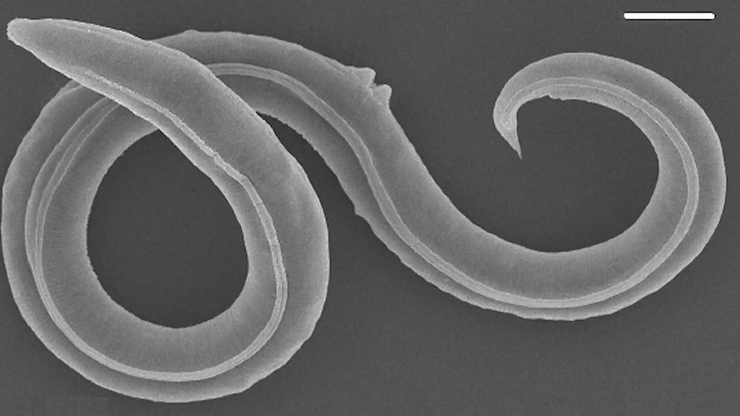By: Haolun Zhang
According to a recent research article, scientists have found two tiny roundworms buried under countless layers of Siberian snow. At the time of the ice age, these two female nematodes, also known as worms, were encased in ice and preserved for 46,000 years until scientists found them.
In 2018, Anatasia Shatilovich, a Russian scientist, discovered two nematodes frozen in ice, less than a millimeter long. They were promptly revived by simply placing them in water. Excitedly, her team brought them back to the lab, where they used radiocarbon dating and determined that the two nematodes were frozen between 45,839 and 47,769 years ago.
After researching the worms’ frozen state, they discovered that they had entered a condition known as cryptobiosis; yet the scientists had only seen the peak of the iceberg. Cryptobiosis occurs when the body enters a state where it is neither dead nor alive, but simply hanging between them.
“The major take-home message or summary of this discovery is that it is, in principle, possible to stop life for more or less an indefinite time and then restart it,” said Dr. Teymuras Kurzchalia, a professor emeritus at the lab who was involved in the study.
After analyzing the genes of the nematodes, researchers found some genes that are shared by multiple species of nematodes that can enter cryptobiosis. Researchers then concluded that the nematodes use a specific sugar called trehalose to survive. According to Dr. Kurzchalia, “Without this [trehalose] sugar, they just die.”
“To see that the same biochemical pathway is used in a species which is 200, 300 million years away, that’s really striking,” said Philipp Schiffer, research group leader of the Institute of Zoology at the University of Cologne and one of the scientists involved in the study. “It means that some processes in evolution are deeply conserved.”
Using these genes, Dr. Kurzchalia mentioned that it might be one day possible for cryptobiosis to be applied to humans. However, there are no solutions currently existing to use cryptobiosis for this purpose.
The two nematodes that were found frozen lived in the laboratory for a couple of days, giving birth to several new nematodes, and finally rested in peace. The average lifespan of a nematode is around a few days.
Well, unless they are frozen in ice, that is.











